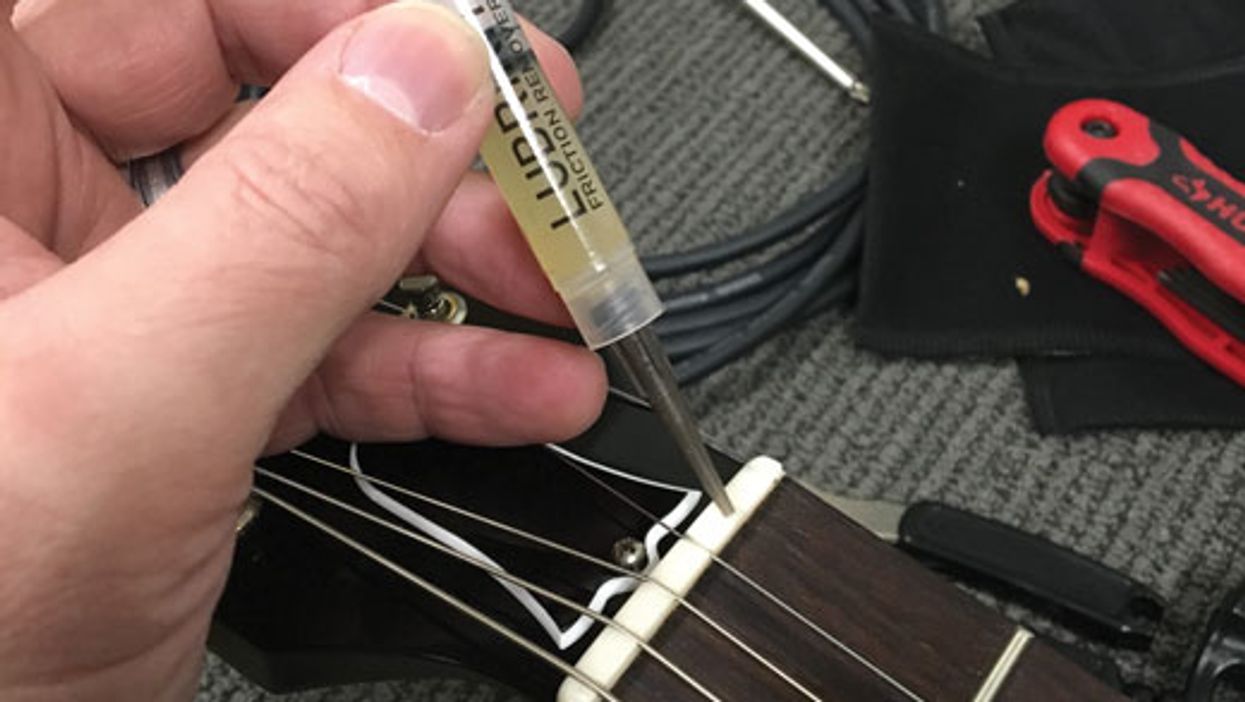We all tend to spend quite a bit of time (and money) experimenting with amps, effects, and guitars—fine-tuning our rigs until they produce the tones we hear in our heads. It's just as important, however, to eliminate the sounds we don't want our rigs to make! I'm talking about 60-cycle hum, ground loops, and the noises things like dirty guitar pots and vibrating tremolo springs can make. Sure, sometimes extraneous noises from things like microphonic unpotted pickups on vintage guitars can be charming. It's part of the vintage mojo, right? But for the most part, I like a quiet rig. In this first installment of a two-part piece on noise issues, we'll explore ways to keep your guitars noise-free.
Pickups. Single-coil types are notorious for 60-cycle hum. Way back in the mid '50s, designer Seth Lover invented the humbucker, a pickup that solved this problem. But, of course, humbuckers don't sound like single-coils. If you want the twangier, airy tones that single-coils produce, but without the noise, there are a few options. Stacked single-coil pickups have been around since the '80s and are one way to go. They are the same size as a traditional single-coil, but they utilize two coils that are stacked vertically and wired like a humbucker to, you guessed it, “buck the hum." Just a couple examples are the Gibson P-100 (a stacked P-90-type pickup) and the Seymour Duncan Classic Stack, which is available in Strat- and Tele-type models. Stacked single-coils don't sound exactly like true single-coils, but they are in the ballpark.
A few companies tackle 60-cycle hum by using a humbucking coil that is separate from the actual guitar pickups. Examples include the Ilitch BPNCS and the Suhr SSCII systems.
Unbalanced coil humbucking pickups. It's worth mentioning that not all humbuckers are created equal when it comes to noise cancellation. There has been a trend as of late towards humbuckers with unbalanced coils. Pickups wound in the '50s and '60s were more inconsistent than their modern counterparts because there was less automation in the production. It's not difficult to wind two coils of a pickup with precisely identical turns of wire today, but it would have been nearly impossible 50 years ago.
When a humbucker's coils are wound to slightly different strengths, this can tend to open up the sound of the pickup slightly by providing some single-coil-type character to the tone—a potentially pleasing characteristic. With that said, a humbucker with unbalanced coils also cannot buck the hum as efficiently as a pickup with perfectly balanced coils—a potentially displeasing characteristic. It's usually not a huge deal, but your mileage may vary.
Pots and wiring. Making sure your guitar is properly wired and shielded is important. If it wasn't done at the factory, a good tech can shield your guitar control cavity with paint or by lining the cavity with shielding material.
When it comes to guitar pots, I've found that most become noisy over time. I really dislike hearing the scratchy sound of a noisy volume pot when riding it to make dynamic changes or volume swells. A can of DeoxIT spray, however, can work wonders on noisy pots. You can have your tech show you where to carefully spray a pot, and you'll want to then turn the pot vigorously to clean the internal point where the pot's wiper makes contact. While you're at it, periodically cleaning your switches and output jack is always a good idea. The 3- and 5-way switches on Strat- and Tele-style guitars are notorious for becoming dirty, noisy, and intermittent over time.
Bridges, nuts, and other extraneous noises. Sometimes, especially on high-gain settings, my tremolo-equipped guitars make sympathetic ringing or howling noises after I play tight, palm-muted chords or phrases. Most of these noises can be attributed to vibrating tremolo springs, which are amplified by the pickups. Some guitarists probably like this, but it can drive me nuts, especially if I'm playing palm-muted rock or metal riffs. Sliding a folded-up Kleenex or very thin piece of foam under the trem springs will usually alleviate these issues. You just want the material to absorb and mute the extra ring-producing vibration without impeding the movement of the springs in any way.
The nut and string trees can be another source of pinging and boing-y sounds, not to mention annoying tuning instability. If you hear these types of sounds when bending strings or using the vibrato bar, it's wise to have a tech make sure your guitar's nut is properly cut. If the nut is not the culprit, a little Big Bends Nut Sauce or D'Addario LubriKit Friction Remover in the nut slots and under the string tree can solve most string-binding issues. I'll also occasionally add the smallest dab where the strings break over the bridge saddles if I think any noises are coming from the area. Even strap locks can create strange rings and rattles that the pickups can amplify. A little dab of 3-In-One oil on the locks can work wonders.
I hope these suggestions help you keep your guitars producing the sounds you like, and minimize the ones you don't. Until next month, I wish you great tone!


















